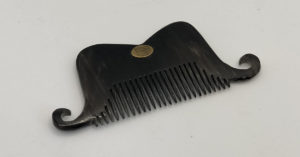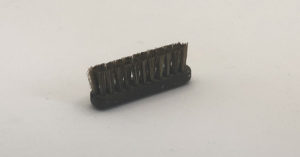The mustache brush has been an indispensable accessory for male care for centuries. And today, thanks also to the latest trends that have brought back the mustache, it is increasingly sought after by admirers. But what is this historic tool for and, above all, how is it used?
Having a brush available is essential to always show a tidy and well-managed mustache, especially in this month of November. In fact, in these days, Movember is celebrated, the month dedicated to male health, represented by the custom of growing long and showy mustache for four weeks. And on the occasion of this anniversary, Antica Barbieria Colla launched its special promotion a few days ago: by purchasing two products from the beard line by November 5, the Extra-Firm Mustache Wax is free.
Mustache brush: history and use
The mustache brush is a tool whose origins date back to ancient times, so much so that finds from ancient Greek and Roman civilizations have come down to the present day. And it is even thought that the invention of this instrument is even antecedent, considered that the custom of wearing long beards and equally showy mustaches was very common for several centuries before the birth of Christ.

This accessory has found a new life recently, with the mustache and beard making a big comeback in recent years. And so the most varied representatives have returned to the market, but not everyone knows the actual uses of this tool. What is it for?
- Taming the hair: similarly to what happens for the mane, combing the mustache allows you to tame it, rearranging your appearance and orienting the hair itself in the desired direction;
- Remove static energy: the action of combing the mustache reduces its static energy, thus preventing the hair from assuming unwanted shapes;
- Remove impurities: the gentle action of the brush removes accumulations of dust, flakes of skin and other residues that may have been trapped between the mustache despite proper washing.
Antica Barbieria Colla preserves several shaving brushes from distant times. Among the many, the one that belonged to Giacomo Puccini stands out, mentioned by Franco Bompieri in his book “Antica Barbieria Colla, ovvero della salute dei capelli”:
[Mantovanini] had therefore been working for a few days in Colla’s shop when the Master Puccini entered: he was the only free worker. Colla, with his gentle manner, approached the Master and said to him: “Take a seat” and called Mantovanini who at the time must have looked like a child, if until he was sixty he kept the diminutive appearance of an ageless man, and he explained the cut he had to make. Guido felt paralyzed, and he could do nothing but pretend to cut the Master’s hair. After a week Puccini returned. The old boss came to meet him and Puccini asked him: “Isn’t that boy from the other time around?” Guido, as he heard Puccini asking for him, ran into the back and hid, thinking that the Master would complain about the previous cut; but Puccini, smiling, added: “Because, you see …, he didn’t do anything to my hair, but that’s okay with me”. I still keep Giacomo Puccini’s toothbrush with which he used to comb his mustache in the shop.
What types of mustache brushes to try?
Today on the market there are two main types of mustache brushes, even if there is no lack of more curious alternatives:

- Animal bristle brush: it is a real miniature brush, equipped with thick bristles, usually obtained from the mantle of animals such as wild boar or pig. They help to untangle the mustache, acting in depth, and eliminating excess static energy;
- Toothed Comb: more similar to a hair comb, it features small, side-by-side teeth and a flat profile. It can be made of bone, metal and, more recently, also plastic.
Regularly combing the mustache not only guarantees its shape, but also ensures its shine and promotes the well-being of the skin, eliminating all excess sebum residues.

